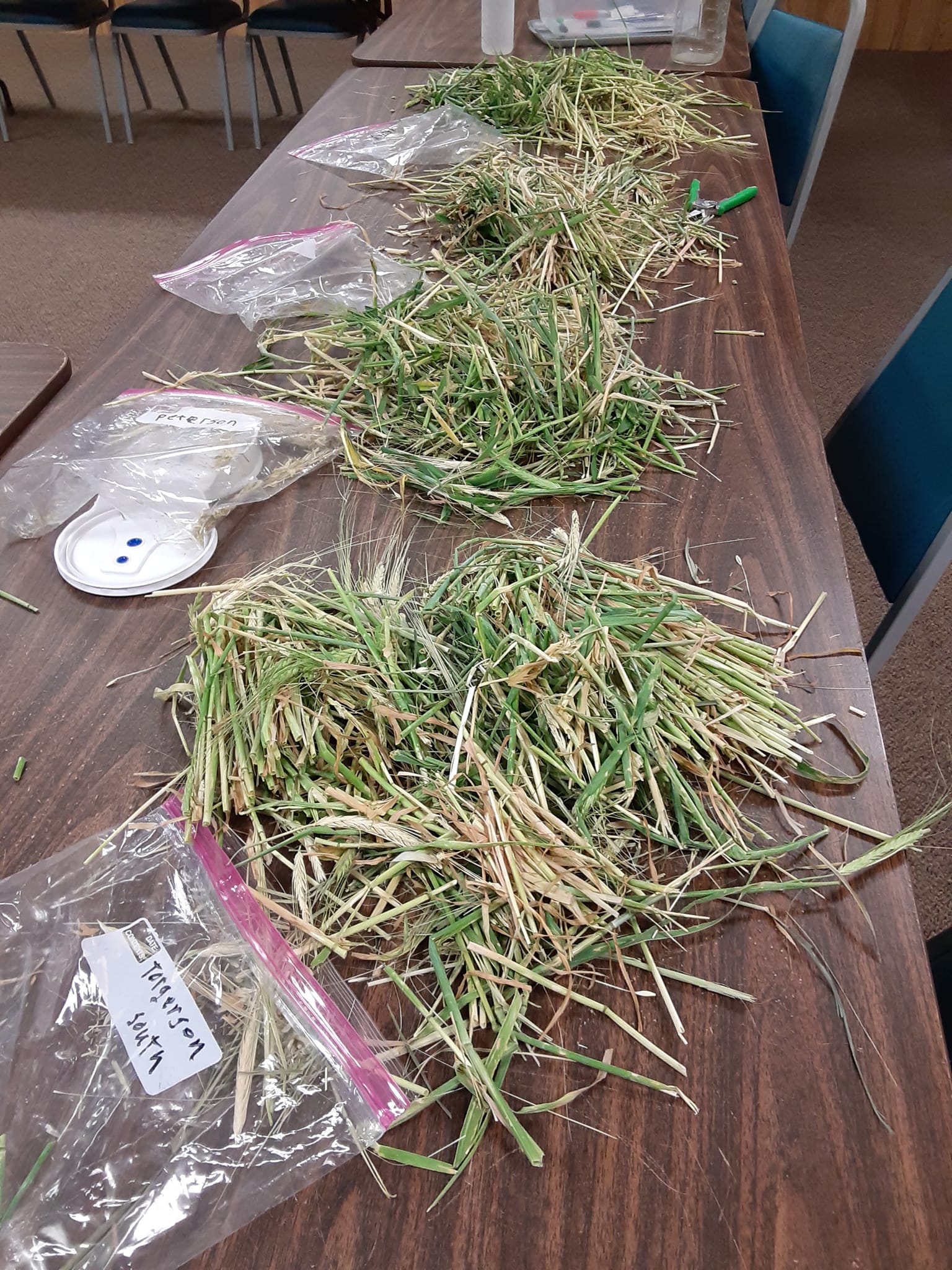
Glacier County
Drought and hail prompt increased need for nitrate testing of forages
Published: 2022By Kari Lewis
For the second consecutive year, northcentral Montana was in extreme drought with extremely limited forage available. Producers turned to any available forage resource to provide hay for their livestock. Numerous crops in the county were hailed-out, which resulted in thousands of acres of hail-damaged wheat and barley crops baled for forage. These stressed grain crops tend to be high in nitrates. Nitrates pose a significant risk to livestock, including potentially decreased performance, abortions, and even death.
In 2022, Glacier County MSU Extension performed 94 individual nitrate tests on numerous forages including durum wheat, barley, canola, oat/barley mix, triticale, triticale/oats/peas, Willow Creek winter wheat, and winter rye. These in-office tests provided producers with critical decision-making information to know if forage was suitable to be cut for forage or if harvest should be delayed until nitrates declined to a reasonable level. With fuel costs at unprecedented levels in 2022, it was critical that producers have the best information available to prevent spending resources on harvesting high nitrate forage that would later be low quality or unusable.
Of the forages sampled, 20% had nitrate levels that would necessitate limited feeding of that forage, while 10% of forages were at a toxic level. This knowledge allowed producers to delay harvest until nitrate levels declined to a safe level and would produce usable, quality forage. By providing an in-office nitrate test, producers could have information the same day, versus waiting multiple days to send a sample to a lab while forage quality matured and declined. Providing forage nitrate tests is an extremely valuable resource to aid local producers.


